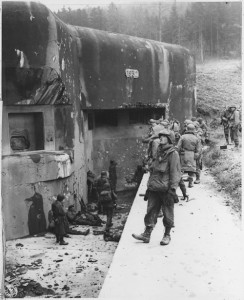Large-scale projects executed with foresight, determination and technical brilliance that end up making the problem worse are frequently compared to the Maginot Line.
Understanding this famous failure can actually help us practice Six Sigma better.
After World War I, France sought ways to protect itself from another war with Germany. French generals, lead by Minister of War Andre Maginot, decided the country needed a strong deterrent against invasion.
 Some, like a young Charles de Gaulle, argued that the best way to defend France was to create an agile army that used mechanized vehicles to provide the speed and mobility required to respond to trouble wherever it happened. Most leaders, however, were still looking for ways they could have prevented the last war. They chose to secure the country’s future by protecting it from the dangers of the past and built a line of fortresses on the border with Germany and named it after Andre Maginot.
Some, like a young Charles de Gaulle, argued that the best way to defend France was to create an agile army that used mechanized vehicles to provide the speed and mobility required to respond to trouble wherever it happened. Most leaders, however, were still looking for ways they could have prevented the last war. They chose to secure the country’s future by protecting it from the dangers of the past and built a line of fortresses on the border with Germany and named it after Andre Maginot.
Maginot and his generals were right about the need for a strong defense. The line was completed just as Germany was preparing to invade France.
Germany faced an imposing barrier.
The Maginot Line was made up of more than 500 buildings that were reinforced with steel to survive all known forms of artillery. Its fortresses were supplied with enough ammunition to create a massive continuous field of fire.
The German army didn’t cooperate by attacking the Maginot Line directly. It sent troops through Belgium and neatly bypassed the fortified barrier. The Maginot Line was cut off from the action, and its guns were left pointing in the wrong direction.
While France was spending billions preparing to re-fight the last war, Germany perfected the next generation of combat by creating a high-speed mechanized army that swept through France in six weeks.
Six Sigma and the Big Picture
Projects like the Maginot line are frequently doomed because they are out of touch with the technology and conditions of the day. Many Six Sigma projects are similarly doomed because they are out of touch with their company’s strategy.
Like the Maginot Line, a Six Sigma project may be executed perfectly and completed on time, but end up pursuing an old strategy and leaving the company unprepared for today’s environment. Organizations have several ways to help Six Sigma teams align their projects with company strategy.
Review and update goals — It’s leadership’s responsibility to post and promote the goals and objectives teams should pursue. Leaders should also make sure that goals and objectives support the company’s mission.
Identify Critical Success Factors (CSF) — CSFs are directly linked to the company’s success. When leadership makes Six Sigma project teams aware of CSFs, these teams’ actions will support the CSFs rather than accidentally undermine them.
Set performance measurement standards — A company that defines its strategy in measurable terms and evaluates project teams by how well they support the strategy gets better results. These include gaining new customers, increasing sales revenue and growing market share.
Six Sigma teams can avoid building a Maginot line by aligning their actions with current corporate strategy that is in touch with the conditions of today’s evolving world.



